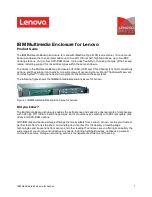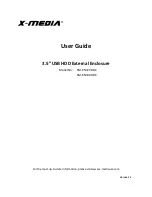
Chapter 4 SPAN Operation
CPT7 and CPT7700 Installation and Operation User Manual v9
84
6. The system will require an external azimuth input, either from vehicle motion, dual antenna input or
command input. While in this state the INS Status field reports WAITING_AZIMUTH.
If vehicle movement is detected, any ongoing static coarse alignment will be reset, and the INS Status
field will report MOTION_DETECT.
7. After an alignment is completed, the INS Status field changes to INS_ALIGNMENT_COMPLETE. The
system transitions to navigation mode.
8. The solution is refined using updates from GNSS. Once the system is operating within specifications and
after some vehicle movement, the INS Status field changes to INS_SOLUTION_GOOD. This indicates
that the INS filter has successfully converged to within performance specifications.
Kinematic Alignment
The kinematic or moving alignment is performed by estimating the heading from the GNSS velocity vector and
injecting it into the SPAN filter as the initial system heading.
For the kinematic alignment routine to work optimally, the course-over-ground azimuth must not include any
bias from the defined Vehicle Frame. (For example, a plane being blown in the wind has a large ‘crab angle’
and the course-over ground trajectory will not match the direction the IMU is pointing.)
The rotation from the IMU Body frame to the Vehicle frame (RBV) must be set to enable kinematic alignment.
In order to simplify this configuration it is strongly suggested that you mount the IMU in parallel to the vehicle
frame. When using the default RBV configuration, the X-axis of the CPT7 should point in the direction of
travel.
The kinematic alignment begins when the receiver has a good GNSS position, fine time is solved, the Body to
Vehicle frame rotation is known and a GNSS velocity of at least 5 m/s (~ 18 km/h) is observed. During
kinematic alignment, keep the vehicle roll at less then 10°.
5 m/s is the default alignment velocity. If a different alignment velocity is required, it can be
changed using the
SETALIGNMENTVEL
command. Refer to the
for more information.
While it is possible to lower the minimum speed required for kinematic alignment to take
place, the higher the value, the more closely the course-over-ground estimate will match the
vehicle heading.
The accuracy of the initial attitude of the system following the kinematic alignment varies and depends on the
dynamics of the vehicle. The attitude accuracy will converge to within specifications once some motion is
observed by the system. This transition can be observed by monitoring the INS Status field in the INS logs.
Dual Antenna Alignment
SPAN can also use heading information available from a NovAtel Dual Antenna ALIGN solution to rapidly
perform an alignment. Refer to
on page 108 for details.
NVM Seeded Alignment
SPAN can use the alignment information from a previous power up to quickly perform an alignment. For
information about enabling and using an NVM Seeded Alignment, refer to
INS Seed / Fast INS Initialization
Manual Alignment
If the initial azimuth of the system is known, it can be entered manually using the
SETINITAZIMUTH
command. Refer to the
OEM7 Commands and Logs Reference Manual
for more information about this
















































